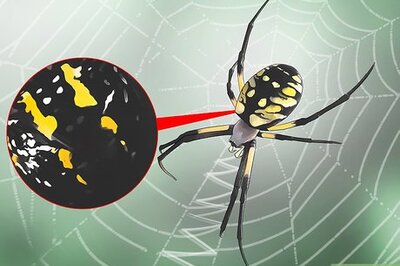
views
Scientists have discovered the world’s oldest piece of cheese in a grave in Xinjiang, China, dating back 3,600 years. The dairy product was found laid across the neck of a mummified young woman in a coffin excavated two decades ago from the Xiaohe Cemetery.
The original discovery was made in 2003. However, researchers have now identified the sample as the oldest cheese ever found. Fu Qiaomei, a paleogeneticist at the Chinese Academy of Sciences in Beijing, revealed that the cheese had transformed into dry, dense, and hard dust. “Regular cheese is soft. This is not. It has now become really dry, dense and hard dust,” Qiaomei told Sky’s partner network NBC News.
Fu explained that the woman’s coffin, which was covered and buried in the dry climate of the Tarim Basin desert, was well preserved, as were her boots, hat and the cheese that laced her body.
She said that a DNA analysis of the cheese samples recounts the story of how the Xiaohe people, now known as Xinjiang, lived and interacted with mammals. The findings also demonstrate how animal husbandry evolved across East Asia.
The ancient burial traditions often included things of significance to the person buried alongside them. The fact that the coffin contains chunks of cheese alongside the body showed that “cheese was important for their life,” Fu added.
The research team took DNA samples from three tombs in the Xiaohe Cemetery and processed them to trace the evolution of bacteria across thousands of years. The analysis revealed that the cheese was kefir cheese, made from fermented milk using kefir grains, with evidence of goat and cow’s milk being used.
It also demonstrates how Xiaohe people, who were genetically lactose intolerant, consumed dairy before the advent of pasteurisation and refrigeration, as cheese production lowers lactose content.
“We were able to interrogate the DNA information of a Lactobacillus species that was regularly propagated and consumed by humans over thousands of years,” the team said in their research, published in the journal Cell.
“These 3,500-year-old kefir cheese samples are among the few dairy remains preserved more than 3,000 years and were produced by the Bronze Age Xiaohe population—a population that possesses mixed lifestyles and techniques,” they added.
However, when asked if the ancient cheese was still edible and if she would try it, Fu replied, “No way.” The study further mentioned that shotgun sequencing of the DNA libraries was used to recover the metagenomic information of the ancient kefir cheese.




















Comments
0 comment